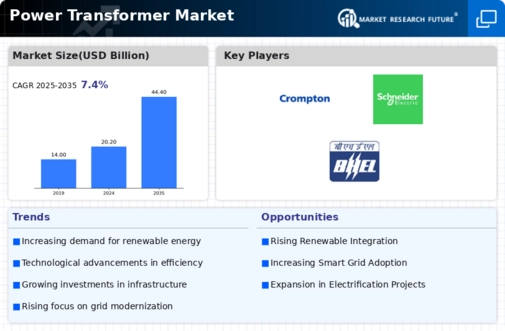Market Analysis
In-depth Analysis of Power Transformer Market Industry Landscape
Additionally, significant contributions to investments come from emerging nations, notably China and India. As an illustration, in 2018, the government of Bangladesh inked two financing agreements amounting to USD 515 million with the World Bank. These agreements aimed to support the expansion of the electricity transmission network throughout the nation.
The impetus behind these investments lies in the expanding urbanization and industrialization trends, accompanied by the establishment of new data centers globally. These developments continuously enhance technological aspects, leading to an increased demand for electrical appliances and overall infrastructure improvement in the sector. The surge in demand is intricately linked to the growth of transmission and distribution networks, necessary for supplying power to these expanding sectors with appropriate power ratings and frequencies.
These factors collectively play a pivotal role in fostering the development of new transmission and distribution networks on a global scale, consequently providing a substantial boost to the transformer market. In essence, the involvement of emerging economies and their substantial investments, exemplified by the Bangladeshi government's collaboration with the World Bank, underscores the global nature of this transformative trend in the energy sector. The interconnected dynamics of urbanization, industrialization, and technological advancements propel the need for robust electrical infrastructure. As the demand for electrical appliances rises in tandem with the expansion of data centers, the requisite growth in transmission and distribution networks becomes imperative.
This symbiotic relationship between evolving global needs and the development of energy infrastructure solidifies the transformer market's role as a key player in facilitating a reliable and efficient power supply across diverse sectors worldwide.







Leave a Comment